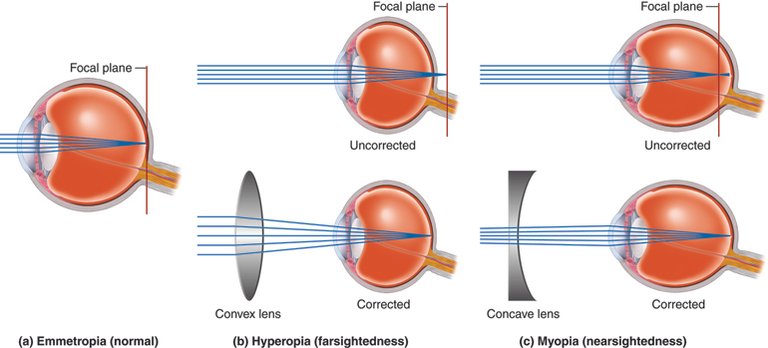You Do Not See Colors, You See Different Light Wavelength
When you fix your gaze upon an image for an extended period and then shift your view, you may notice an afterimage with inverted colors. This intriguing phenomenon is a result of intricate biological processes governing our perception of sight and color.
The perception of color is a captivating fusion of both science and sensation. Our eyes possess the remarkable ability to detect specific wavelengths across the electromagnetic spectrum, falling within the range of approximately 380 nanometers to about 700 nanometers. Wavelengths longer than 700 nanometers belong to the realms of microwaves and radio waves, lying outside the perceivable spectrum, while wavelengths shorter than 380 nanometers encompass ultraviolet and gamma rays, which, though invisible to the naked eye, hold the potential to inflict cellular damage.
When we see objects, it isn't that we are seeing colors, rather we are seeing their wavelength spectrum. Most people see wavelength lesser than 450nm as violet, greater than 450nm to about 480nm as blue, 500nm to 550nm as green, 570nm to 590nm as yellow, 590nm to 625nm as gold, and greater than 625 nanometers as red. It isn't like any object possesses any color, they only absorb some wavelength of light and reflect other wavelengths.
Our visual experience of objects is not a direct encounter with color itself, but rather an interpretation of the object's wavelength spectrum. In essence, an object does not inherently possess a specific color; instead, it selectively absorbs certain wavelengths of light and reflects others. To illustrate this point, imagine a pink garment. The pink fabric absorbs all wavelengths of light except those associated with the color pink, which it reflects to our eyes for the brain to decipher. Similarly, when we perceive the color red, it signifies that the object is absorbing all wavelengths except those beyond 625 nanometers, which our eyes register as red.

wikimedia.org
When we see a color, the light is sent to the cornea which directs the light to the pupil which controls the amount of light in the lens that focuses waveleght to the back of the eyes where the retina is found. The retina is made up of photoreceptors which are cones and rods. The cones absorb light and send it to the brain visual cortex where it is interpreted as color. The cone cells are made up of three types of cells which are the red cone cells, the green cone cells, and the red cone cells making us trichromatic.
While we have just three types of color cones, they work together to help us identify millions of color type which are complimentary. According to physics, a complimentary color is a combination of two color types to give white light. Colors such as purple and gold are reciprocal pair.
Men can have issues seeing colors compared to women and this is because the genes that encode red and green cone show high sequence homology on the X chromosome and so since men have the Y chromosome, they are likely not to see the Red and Green color well compared to women who have two X chromosomes. It has been show a small percentage of women, approximately 12% are classified as tetrachromats, possessing an extra set of cones, thus granting them the remarkable capacity to perceive a vastly expanded array of colors beyond the norm.hundred times color than other people.
Intricacies of human color perception not only underscore the wonders of our visual system but also emphasize the remarkable interplay of genetics, biology, and physics that underpin this captivating facet of our sensory experience.
Reference
- https://www.allaboutvision.com/conditions/retina/tetrachromacy/
- https://www.ncbi.nlm.nih.gov/pmc/articles/PMC6086919/
- https://sites.socsci.uci.edu/~kjameson/JamesonWinklerGLIMPSE2015.pdf
- https://www.aao.org/eye-health/tips-prevention/do-color-blindness-correcting-glasses-work
- https://www.iflscience.com/image-can-trick-your-brain-and-make-you-see-it-color-32003
- https://www.ncbi.nlm.nih.gov/pmc/articles/PMC6120989/
- https://courses.lumenlearning.com/suny-biology2xmaster/chapter/vision/
- https://www.researchgate.net/publication/231075053_Complementary_colours_for_a_physicist
- https://www.ncbi.nlm.nih.gov/books/NBK11059/
- https://www.ncbi.nlm.nih.gov/pmc/articles/PMC3562597/
- https://journals.sagepub.com/doi/full/10.1177/2158244016682478
- https://www.researchgate.net/publication/231075053_Complementary_colours_for_a_physicist

Thanks for your contribution to the STEMsocial community. Feel free to join us on discord to get to know the rest of us!
Please consider delegating to the @stemsocial account (85% of the curation rewards are returned).
Thanks for including @stemsocial as a beneficiary, which gives you stronger support.